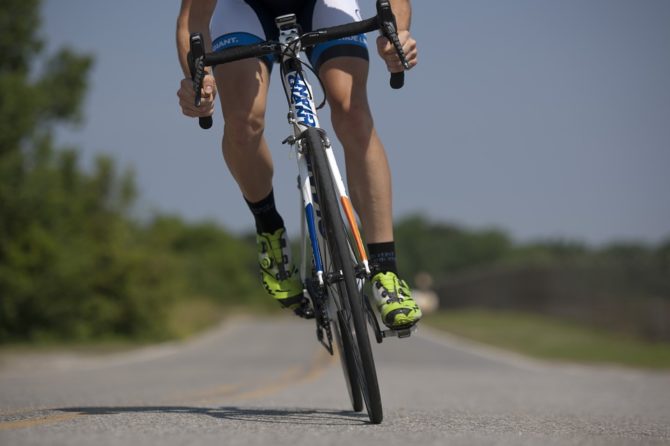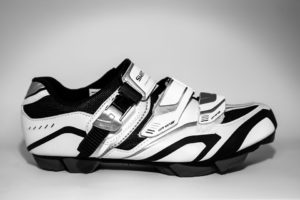
Foot Pain is a Vicious Cycle
Cycling is a great way to keep in shape while minimizing the impact on your feet and ankles, but that doesn’t mean there are no risks for your feet. All the energy you push through your legs is transferred directly into the bike through the bottoms of your feet. Arch pain, heel pain, and toe pain are all common complaints of cyclists. Luckily, just a few simple steps can help you avoid pain and injury and keep you going for miles to come.
Better Footwear
It should come as no surprise that your cycling shoes will affect your foot health. Shoes too tight or pointed in the toes can lead to issues such as bunions or hammertoes. There should be at least 1” of room between your toes and the front of the shoe. Just like all shoes, cycling shoes need to have arch support to avoid issues like plantar fasciitis. Sweat-wicking socks are strongly advised as sweaty feet can lead to fungal growth and athlete’s foot.
Seat Fitting
Your bike seat is at the proper height when your leg extends 80-90% of the way on the downward stroke of your pedal cycle. Knees should be directly under the hips in this extended position. Having your bicycle seat too low can put added pressure on the bottom of the foot and throw off the alignment of your hips and back. Improper seat height is usually felt in the knees, but pain can transfer downward to include calf pain and Achilles tightness. Seats that are too high put all the work on the toes to push the pedal down and back, straining the plantar fascia and leading to arch and heel pain.
Fitting Pedals
There are many types of pedals and each works for a different style of riding and cycling shoe. Your pedals should be fitted to the size of your shoe and position of the cleats. Small pedals can mean increased strain on a single part of the foot, exacerbating conditions such as Morton’s Neuroma. Wider or longer pedals will increase the surface area that your foot contacts, distributing pressure evenly.
Fitting Cleats
 Cycling cleats should fit snug in the heel and wide around the forefoot. The cleat should place the ball of your foot (metatarsal arch) directly over the center of the pedal. Older-style clip-in pedals with toe cages are less adjustable and tend to place more of the forefoot over the pedal. Without proper alignment, your toes will end up doing all the pushing, putting extra strain on your plantar fascia.
Cycling cleats should fit snug in the heel and wide around the forefoot. The cleat should place the ball of your foot (metatarsal arch) directly over the center of the pedal. Older-style clip-in pedals with toe cages are less adjustable and tend to place more of the forefoot over the pedal. Without proper alignment, your toes will end up doing all the pushing, putting extra strain on your plantar fascia.
Proper Pedaling
While riding a bike is easy, riding it properly is another story. Using the correct part of the foot during each push will help alleviate and prevent issues. Your forefoot (just behind the toes) should provide the majority of the energy for each push. There should be an angle of 20 degrees between your heel and the pedal, except during the forward part of your stroke when the angle decreases to less than 10 degrees. For leisure cycling, there should be even force used throughout the pedaling cycle. For competition racing, over 96% of your energy is expended on the downstroke.
Avoiding cycling injuries is easy when you maintain proper seat positioning, have the correct pedal and shoe size, and keep your pedaling stroke strong and even. If you have pain in your hips, knees, ankles, heels, or arches after a long ride (or especially after a short one!) come visit the FAAWC. We can help correct underlying conditions and suggest ways to protect your feet for miles to come.
